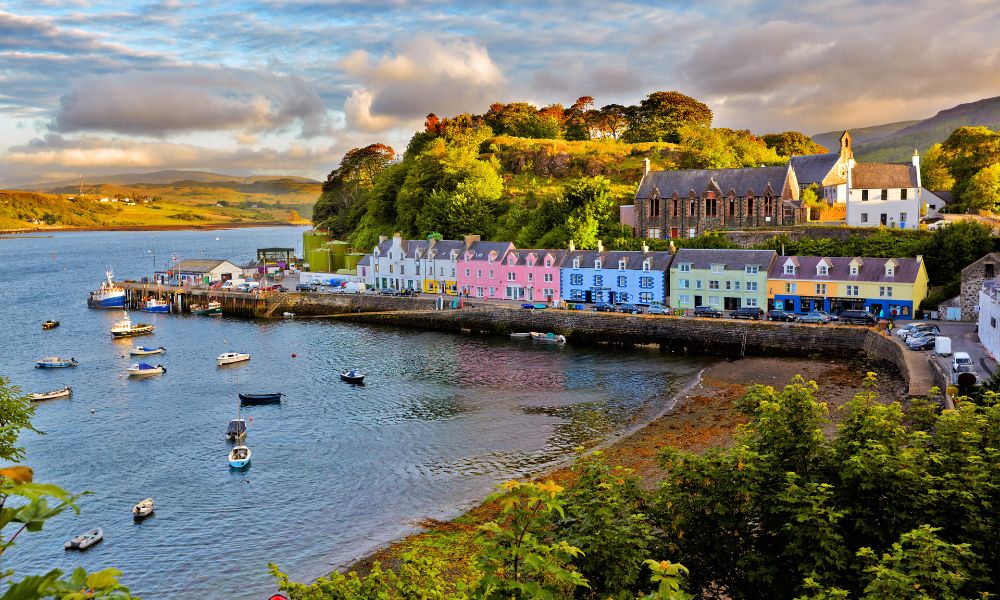Posted by Maris on 21st Oct 2024
Things only Scottish locals know – and you should too before traveling there
Scotland can be as confusing as it is fantastic. It is full of secret glens, spooky castles, and mysterious lochs. It is also filled with mind-blowing festivals and melodic piper performers.
This nation specializes in surprising and perplexing tourists, giving a double whammy of joy and incredulity. The cheerful inhabitants take things in stride so you wouldn't know it.
The truth is that if you know the answers to a few key questions and practicalities, Scotland is an easy country to navigate, despite all the unimaginable situations you might run into here, like hiking in shorts with an umbrella in the summer or being terrorized by an unseen annoyance, the bloodsucking midge.
When leaving Edinburgh, what is the most efficient method to get around? How long is a journey to the islands of Scotland worth taking? Is eating a deep-fried Mars Bar in Glasgow acceptable? (Spoiler alert: nobody ever actually does, but yes.)
Before visiting Scotland, read these important facts and etiquette guidelines.
Pack for all seasons, even in summer...

The saying "Scotland had a great summer last year—it was on a Wednesday" is frequently used. Although it is a humorous joke, there is some truth to it: the nation's weather is a whirlwind of constantly changing four-season changes, with summer days frequently being wet, wild, and glorious all at almost the same time.
Travel in May, early June, or September for the most consistent bright and dry weather. If gray is your preferred color, any time of year will work for you.
...and if you plan to attend the Edinburgh Fringe Festival, check the weather.

If you don't want to hear the bad news, turn away now. Even though the largest arts event in the world, the Edinburgh Fringe Festival, takes place in August during what is known as peak summer, it is frequently a washout. Just as important as a hearty appetite for comedy, theater, circus, and rowdy beer gardens are waterproof shoes and an umbrella you don't mind having blown inside out.
In the UK, Scottish pound sterling banknotes are accepted everywhere.
The variety of banknotes in the UK can be confusing, which may sound ridiculous. Regardless of where they were printed—in Scotland, England, or Northern Ireland—all pound sterling bills are legal currency and accepted nationwide. Although many stores south of the border do not accept Scottish currency, you can spend English currency in Scotland. Even harsher rates are offered by certain foreign exchange providers for Scottish-printed currency.
When discussing politics, exercise caution.

At least politically, Scotland is a divided nation. While the drive for independence is gaining momentum, some Scots are adamant about staying in the United Kingdom. For a quick refresher, be aware that Scotland is already a de facto independent nation with its parliament; it is part of a political and economic union with England, Wales, and Northern Ireland. This can help you avoid upsetting locals when you are conversing with them in the pub.
Scotland may undergo unheard-of change over the next ten years. Westminster has resisted the appeal for a second independence referendum, frequently advocated after the 2014 vote before Brexit failed to pass. A little knowledge of Scotland's sociopolitical past will enhance your trip experience and remind you that you are not merely visiting a location but a point in time.
Driving outside of cities can be considered a kind of art.

Scotland appears to be a pipsqueak when it comes to European geography. Driving about in a few days after digesting it on the map is simple. False.
Outside the major cities, traveling from point A to point B always takes longer than the GPS and Google Maps indicate. This is possibly the most significant consequence of its jigsaw puzzle design, which includes twisted sea lochs, knobby islands, and corkscrewing glens.
Since highways are frequently single-lane, it is necessary to pull over to allow oncoming traffic to pass (the roadside drama includes a welcoming wave). Tractors, campers, and RVs are slow-moving vehicles that can stop traffic, especially during the now-famous North Coast 500. Red deer and straggling livestock may also overrun the route.
A car or camper will get you where you're going faster and more effectively than Scotland's rudimentary train and bus system, but patience is essential. You can also take your canoe, bike, or inflatable kayak on a Scotrail service, which has been upgraded with more cycle carriages and room for large sporting equipment to view everything in between.
Make more time in your plans, not less.
What do first-time visitors to Scotland regret most? Attempting to pack too much onto one journey. You will require at least a week if you are visiting Edinburgh and Glasgow, followed by the Highlands or Stirling and Perthshire. You'll need two weeks if you include the Isle of Skye or the Outer Hebrides in your schedule, and you'll still be having trouble breathing.


